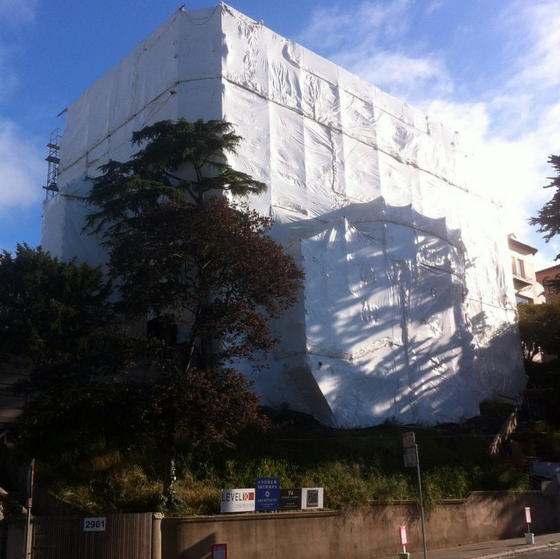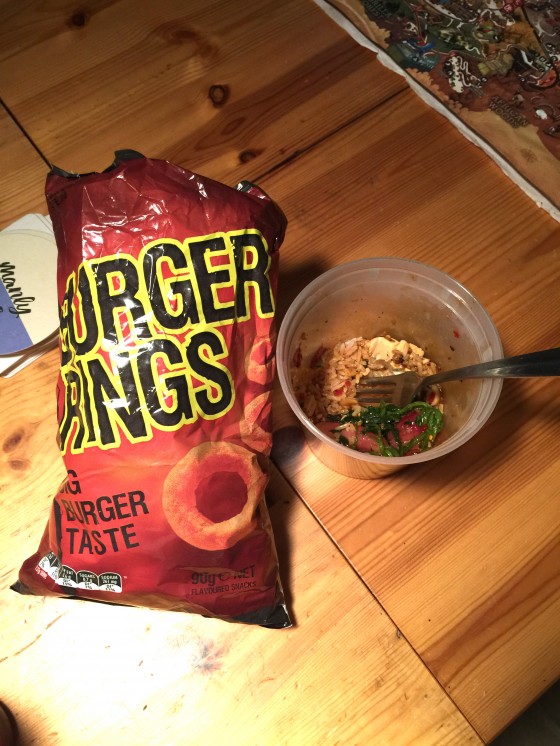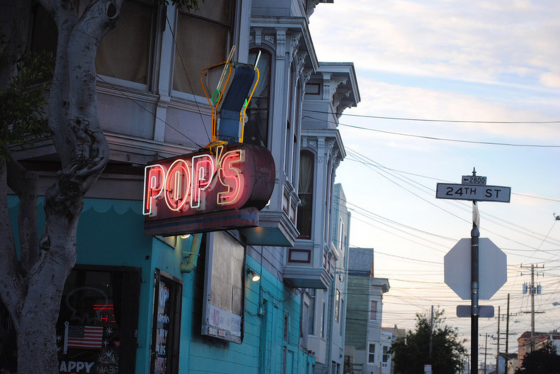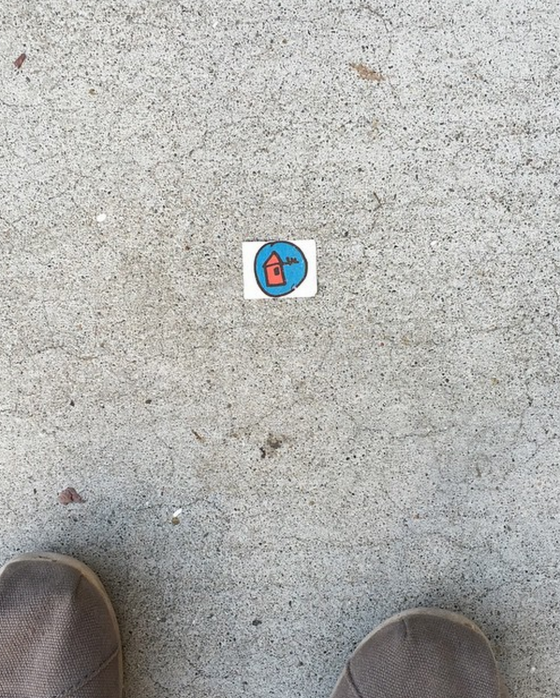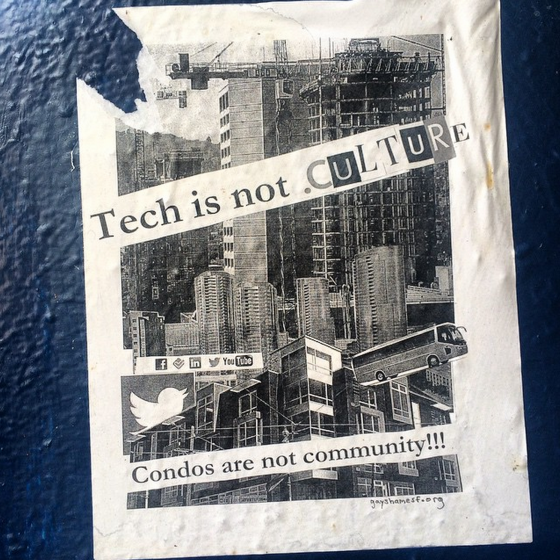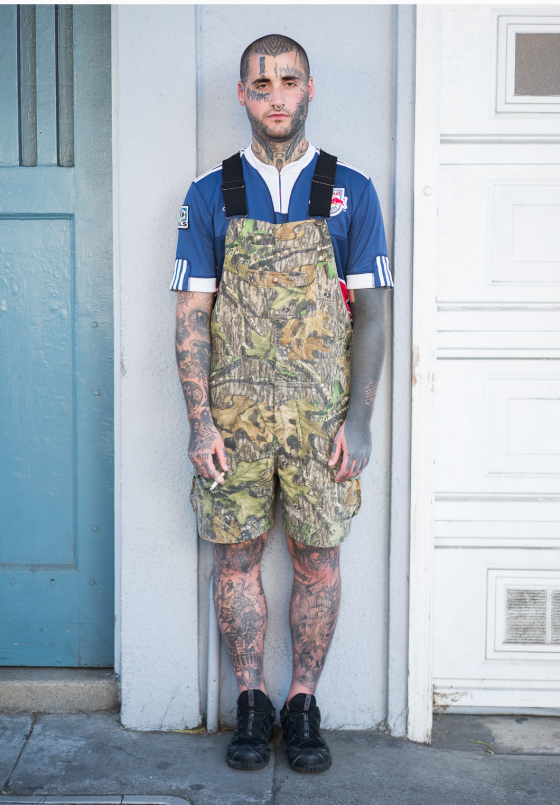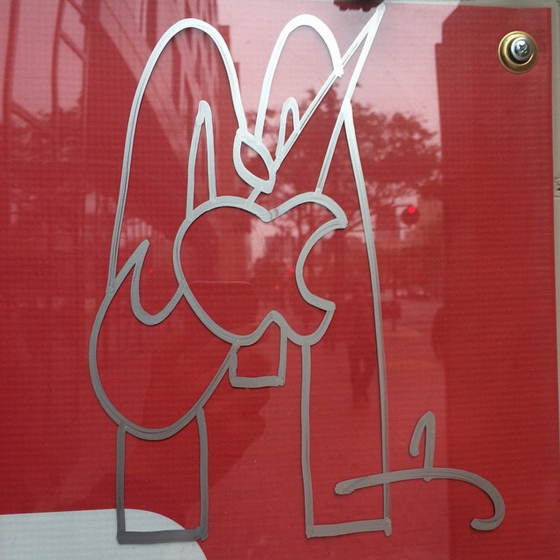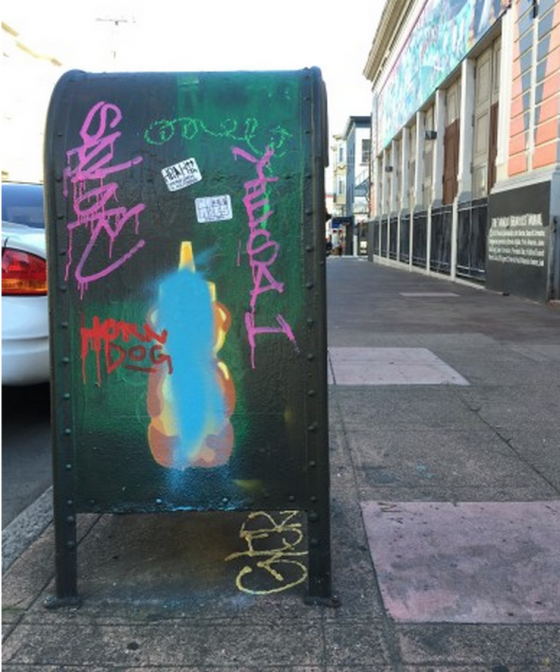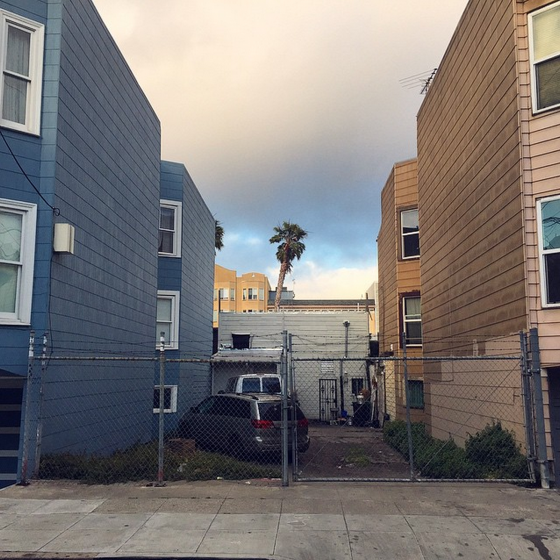[Photo and title by local class war junkie Ticklefight]
What you’ll need:
- 1 order of Ma Po Tofu from Mission Chinese Food
- 1 bag of Burger Rings
Instructions:
- Next time you’re in Australia, bring back a bag of Burger Rings.
- Then get an order of Ma Po Tofu from Mission Chinese Food.
- Eat them side by side.
- Enjoy how well they go together.
- Thank me when you’re grateful.
Now please also enjoy some other recipes I wrote…
Atlas Obscura talks to Randall Ann Homan and Al Barna, authors of the new book San Francisco Neon: Survivors and Lost Icons:
Which neighborhood in San Francisco has the highest concentration of remaining signs?
Grant Ave in Chinatown has the most legacy neon signs per block. This is probably because Chinatown has never experienced a major “redevelopment”phase. Sadly, only two or three of these signs are still illuminated.
Is their loss something that is universally mourned in SF?
People mourn the loss of legacy neon signs, and also the small businesses they represent, which are being squeezed out by gentrification. A neon sign often marks traditional gathering places in neighborhoods, where generations of city residents congregate to watch movies, drink martinis, buy raviolis, eat fish, and even park cars.
The Q&A contains some great shots of iconic neon here in the Mission. Read on.
Ben, 24, explains his look:
My closet is composed of cheap eBay purchases that are made up of hunting camo whatever, Carhartt, sports jerseys, and death metal tees.
(Of course, he may very well be an art student too, who knows.)
[via SF Looks]
Hopefully they get slapped with some fines or something for de-beautifying our community like this.
[via Matt]
In a lengthy piece about why graffiti artists often don’t tag murals, KQED considers the Case of the Honey Bear:
In January, street artist fnnch began creating stencils of honey bears within a four-block radius around the Mission District.
“We all take this image for granted as being totally acceptable,” says fnnch. “But really it’s a surreal idea that you would put honey into a container that’s shaped like a bear.”
On the first night he painted five honey bears, some of them directly on top of tags that graffiti writers had left on mailboxes. Within a week, someone had taken a blue spray-paint can and made a mark right through the center of the bears — the ultimate sign of disrespect.
“When I posted [photos of my work] on Instagram, people started to comment and say that I shouldn’t paint on top of tags for my own safety,” says fnnch.
He had upset the graffiti hierarchy.
Read on for lots more insights into the world of graffiti and murals and why “street artists” are sometimes not respected.
I bet you thought this was gonna be a joke about how long and unruly the Tartine line was, right?
Gotcha!
